This week, the Chinese pistache trees at our office burst into flaming glory, showcasing their brilliant fall color palettes of yellows, oranges, red, and even pinks and deep maroons. We couldn’t ignore it, so it’s our plant of the week!
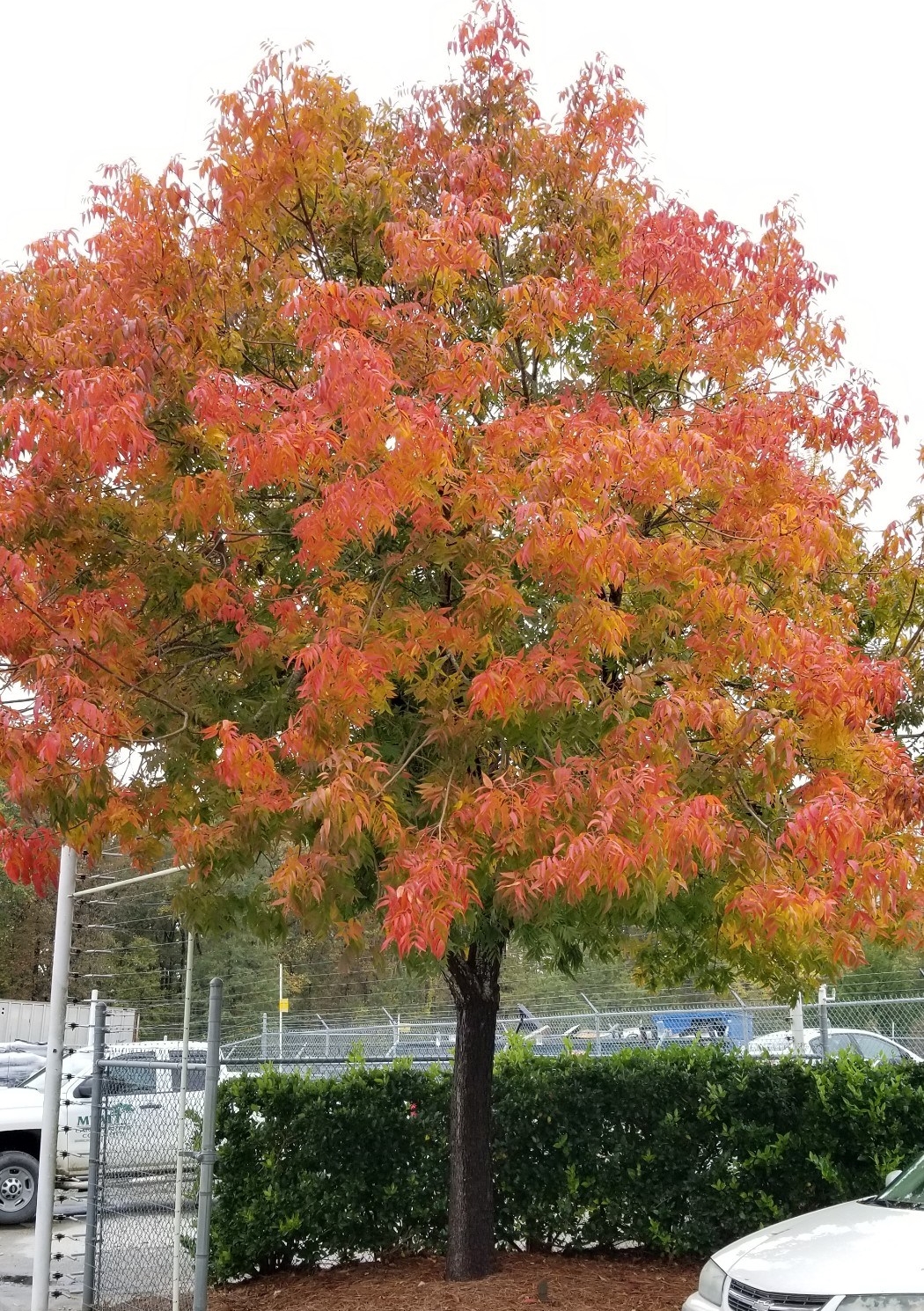
Chinese pistache, or, scientifically, Pistacia chinensis, is a tough, medium-sized tree that fares equally well as a landscape specimen or urban street tree. It is drought tolerant and has no serious pests or diseases. Renowned plantsman Michael Dirr describes the tree as gawky when young in his Manual of Woody Landscape Plants, but it matures into a beautiful specimen tree, rivaling the sugar maple as one of the prettiest trees for fall color in the south.
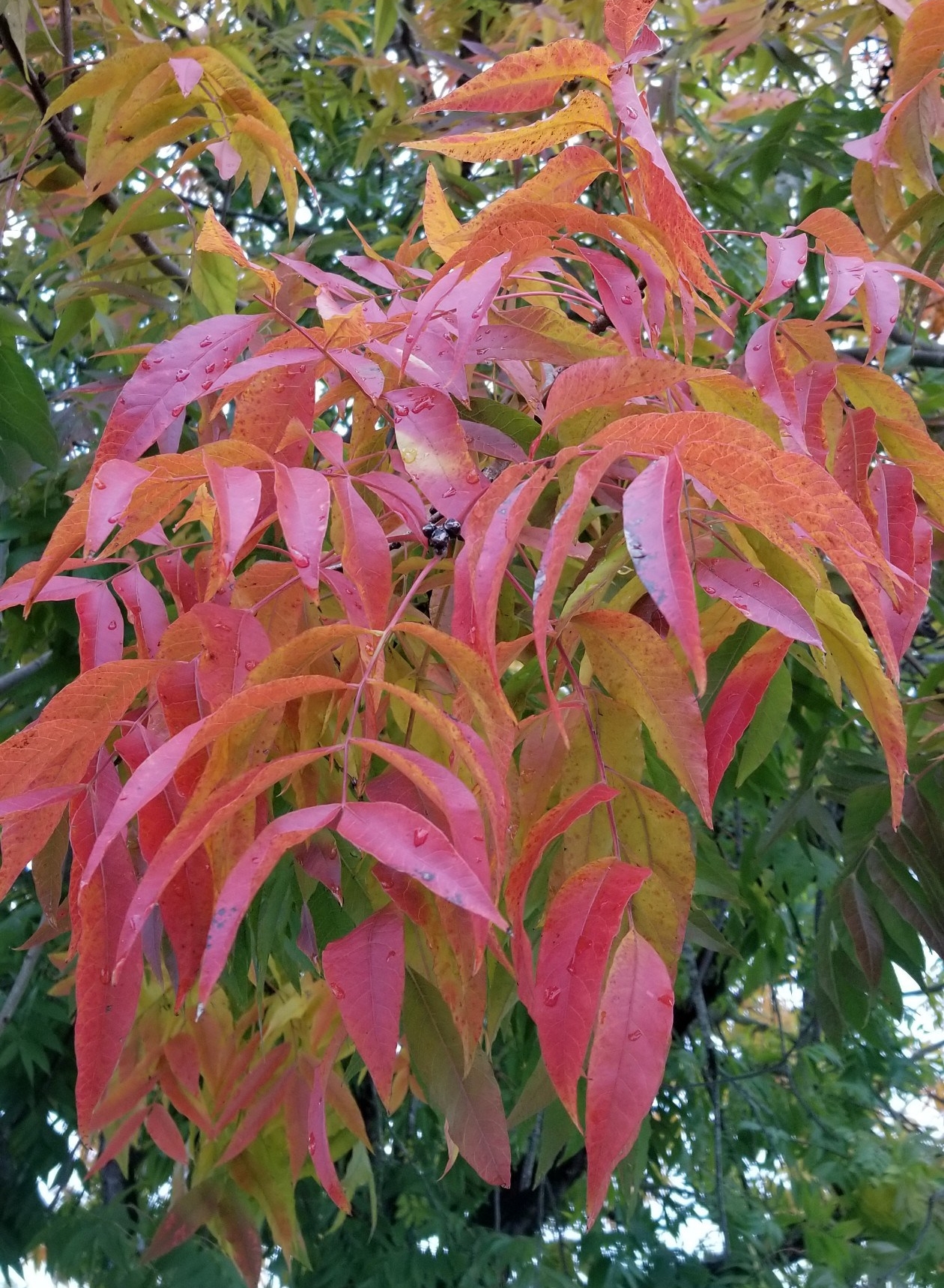
Fun Facts
- Pistacia chinensis is a cousin to the pistachio tree (Pistacia vera), which produces the pistachio nut.
- Chinese pistache trees have separate male and female flowers, and the flowers are on separate trees. This type of flowering is called dioecious, and some other common examples of dioecious trees include hollies and ginkgos.
- The stems of Chinese pistache have a strong odor when bruised or crushed.
ID Tips
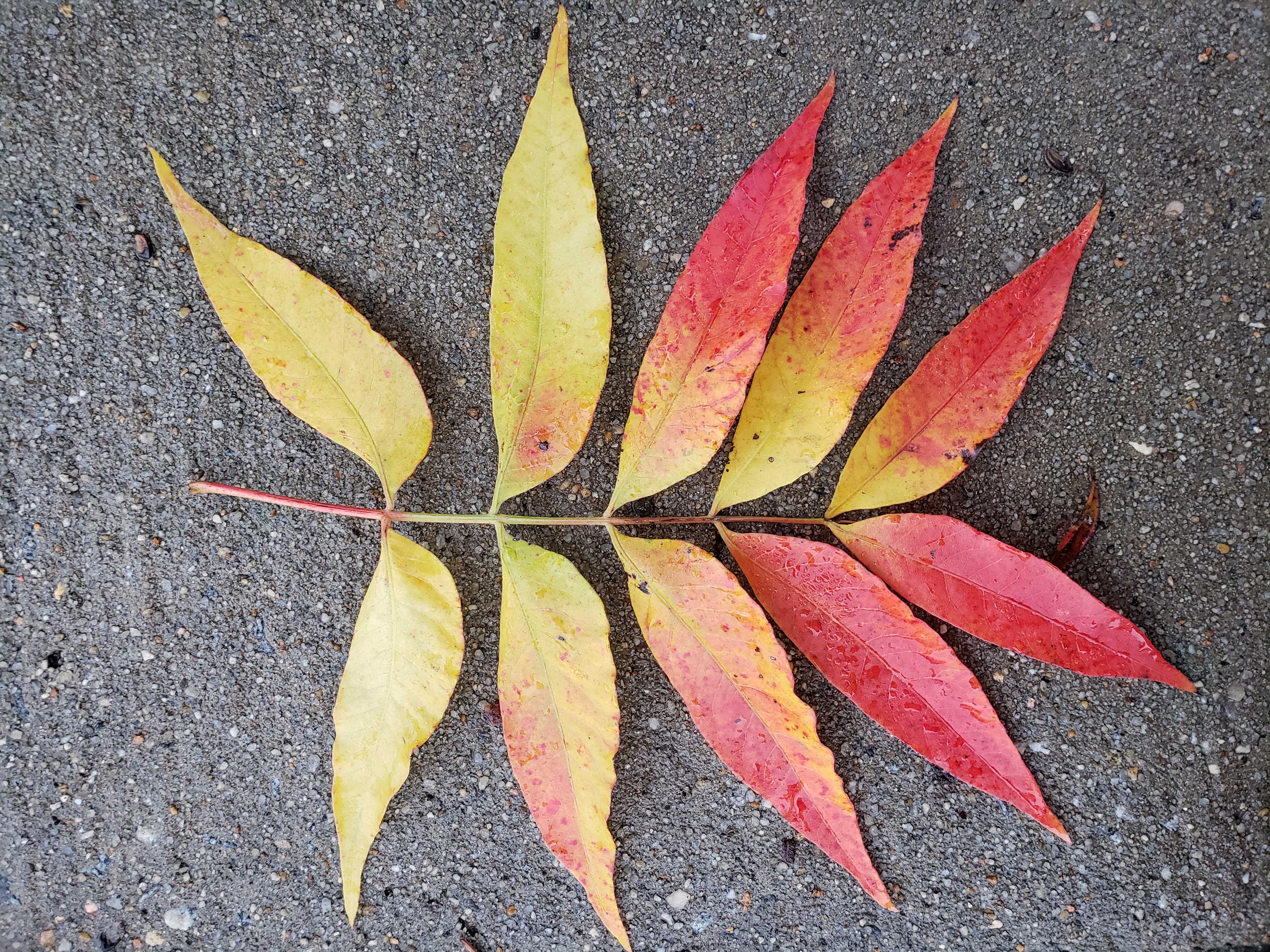 Notice the 5 pairs of opposite leaflets and no terminal leaflet.[/caption]
Notice the 5 pairs of opposite leaflets and no terminal leaflet.[/caption]
- The leaves of Chinese pistache are compound, which means a single leaf is made up of multiple small “leaflets.” The leaflets are arranged opposite of one another, and are almost always in 5 or 6 pairs. Unlike many nut trees, such as walnut, pecan, and hickory, there is no terminal leaflet.
- The buds are large, oval-shaped, and dark brown or blackish in color. There are multiple clustered buds at the branch tips (terminal buds).
- The buds are arranged alternately along the stem.
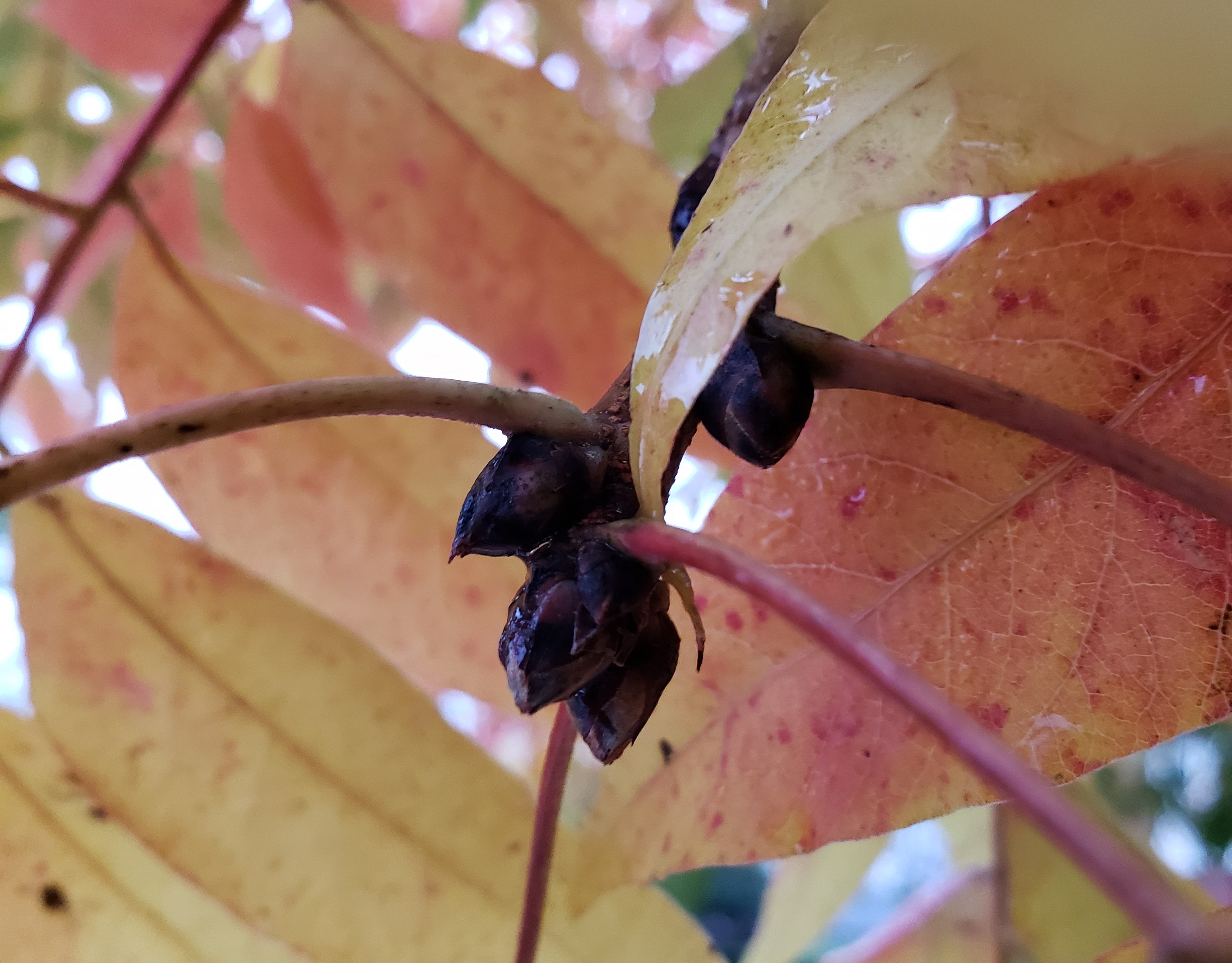 Terminal bud cluster[/caption]
Terminal bud cluster[/caption]
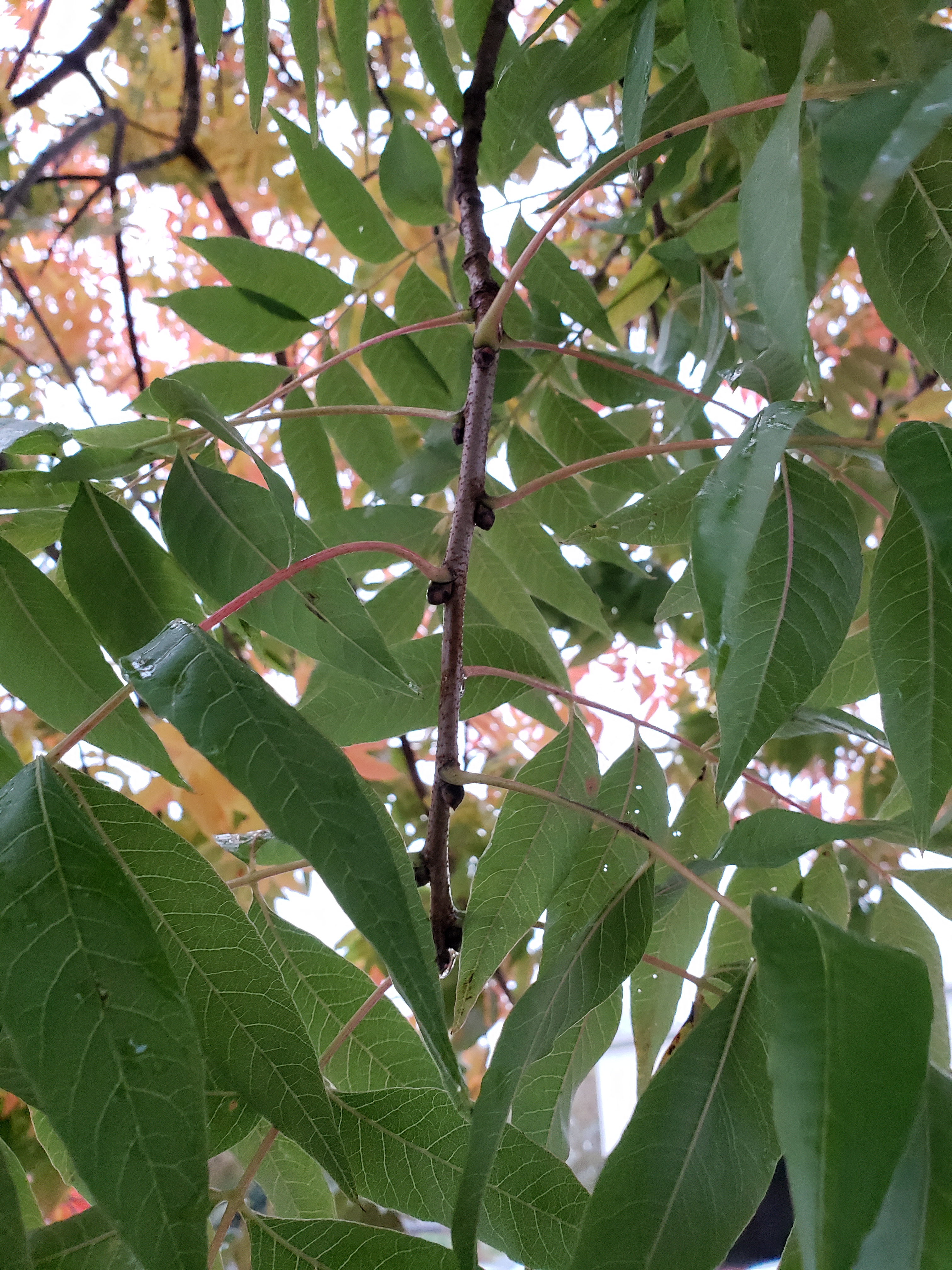 Notice the alternating buds along the stem (the buds are not in pairs).
Notice the alternating buds along the stem (the buds are not in pairs).
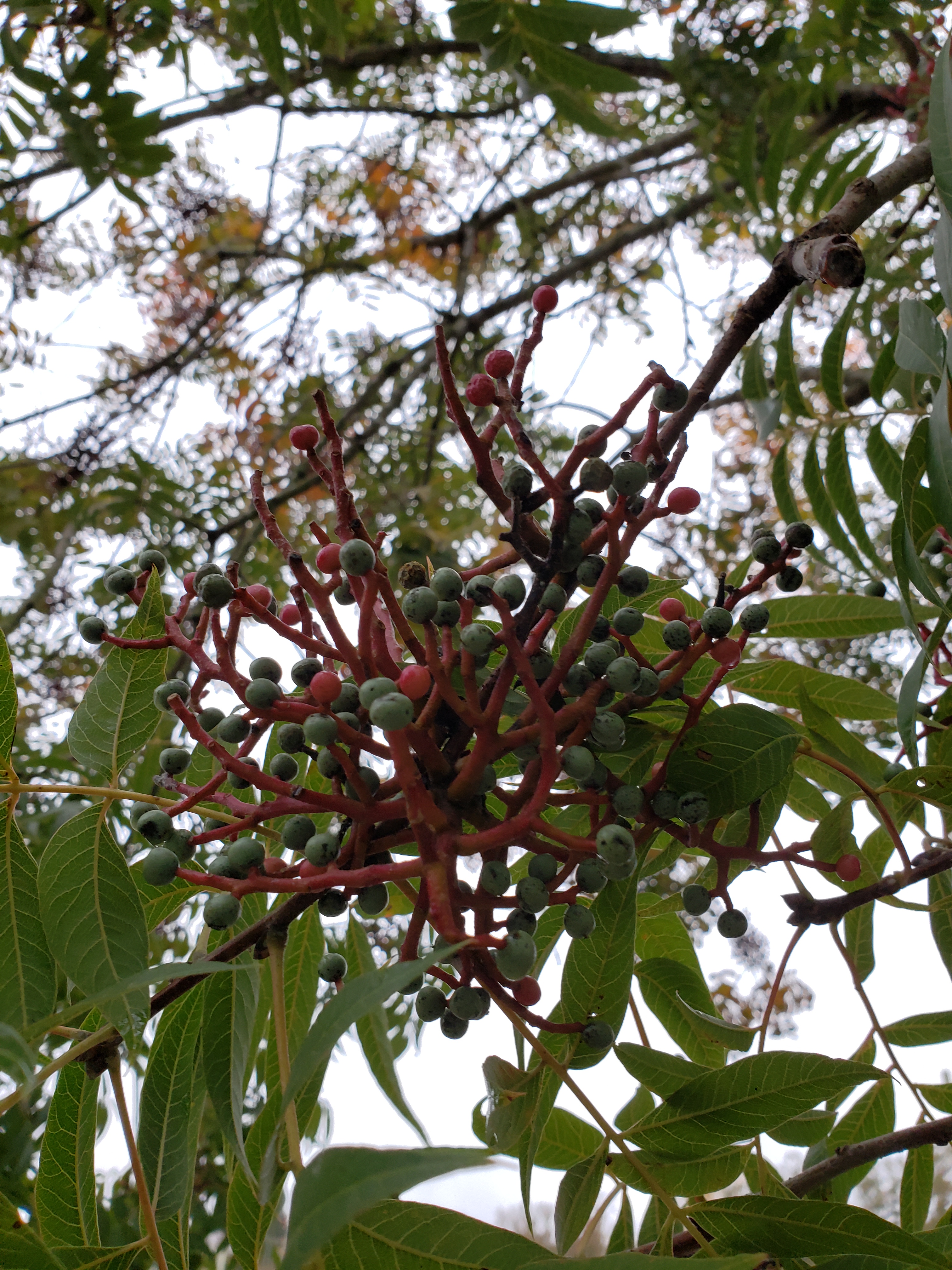 Fruit only develops on female trees, and can range in color from blue to red. The fruit is eaten by birds.
Fruit only develops on female trees, and can range in color from blue to red. The fruit is eaten by birds.